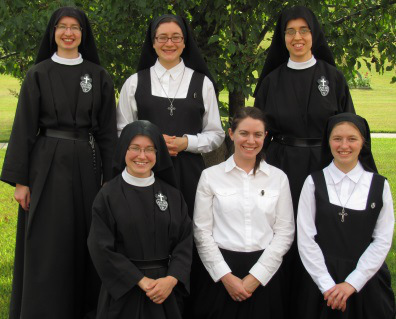
An Aspirant is someone who is living for a while with a community to see if they feel comfortable and for the community to gauge her as well. Some places call it a “pre-postulancy.”
A Postulant is someone who has formally entered an order, has moved in and begun to learn to live in community while remaining in the “asking” stage — a period of more intense discernment. Depending on the community, the postulancy lasts from 6 months to a year, and during this time she or he may or may not be called “Sister” or “Brother”. Whether or not a postulant wears some sort of uniform or follows a simple dress code is also up to the community.
A Novice is a postulant who has been formally received into the community. The novitiate — usually (but not always) two years for women and one year for men — begins a time of intense formation, study and a deepening experience of prayer and will begin both canonical and apostolic formation. If the community wears a habit and takes names-in-religion (some do both, some do neither), all of that will usually (but not always) happen upon entrance to the novitiate, with the sister wearing a white veil. Some communities will permit a name-change upon entering the novitiate, but withhold the habit until first vows, or vice-versa. Because the novitiate is still considered part of discernment, a novice is free to leave the community (or may be asked to leave) at any time.
First Vows occur when a novice has completed the required novitiate and requested formal admission into vows, and the leadership and fully professed members of the community have deemed him or her to be called to their order or association. The novice makes “simple” vows, which are canonically binding for a specific length of time — usually from three to five years, sometimes longer. They are considered “temporarily professed” members of the community and may work in apostolates and sign their names using their community abbreviation (i.e., Brother John Smith, OP; Sister Mary Anna, RSM.)
Temporary profession is still a time of discernment, and a sister or brother is still able to request separation, but since the vows are canonical, it does require a more rigid process.
Final (or “Perpetual) Vows (in monasticism “Solemn Profession”) – the religious makes his or her vows for life as a member of that community. They sign their declared formula on the altar, show it to all in attendance and their vows are sent to the Vatican. They are “fully professed”, and in a sense, a “professional” at the life. As with any profession, formation is ongoing and lifelong.
As you can see, there are many variables.
Now you’re all ready to read this!

